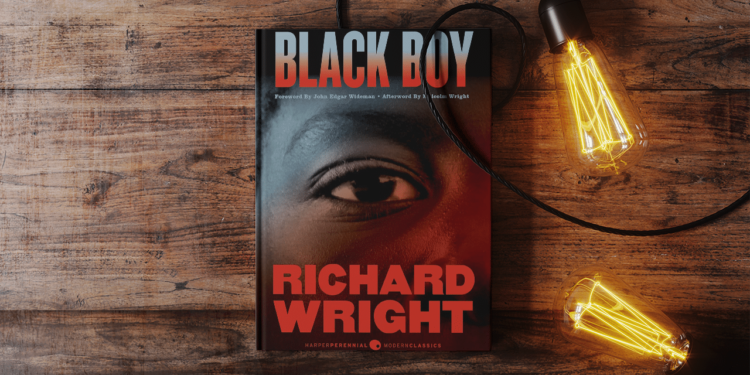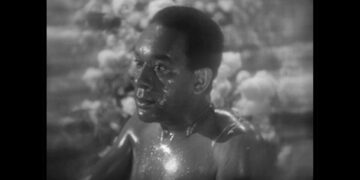Richard Wright, a prominent figure in American literature, is celebrated for his powerful narratives that shed light on the African-American experience. Born on September 4, 1908, in Roxie, Mississippi, Wright led a remarkable life that encompassed poverty, racism, and ultimately triumph through his writing. His works, both fiction and non-fiction, continue to captivate readers, providing profound insights into the struggles faced by African Americans during the early 20th century. In this journey through Richard Wright’s bio, we will delve into his early life, his literary achievements, explore his best books, gain glimpses into his personal life, and examine his profound impact on literature and beyond.
Richard Wright’s Early Life and Background
Richard Nathaniel Wright was born into poverty, a circumstance that shaped his perspective on the world from an early age. Growing up in the racially segregated South, Wright confronted the harsh realities of discrimination and limited opportunities. His father, a sharecropper, abandoned the family when Wright was just six years old, leaving his mother to raise him and his siblings alone. Despite the hardships, Wright’s love for literature and writing began to flourish during his teenage years. He spent countless hours at the public library, immersing himself in the works of influential authors such as H.L. Mencken and Sinclair Lewis. These early encounters with literature would pave the way for his own literary endeavors.
Richard Wright’s Journey Through Literature
Richard Wright’s literary journey began in earnest when he moved to Chicago in 1927. The vibrant city provided him with a new environment to explore and opportunities to further develop his writing skills. Wright’s breakthrough came with the publication of his short story collection, “Uncle Tom’s Children,” in 1938. This collection garnered critical acclaim, establishing him as a prominent voice in African-American literature. Wright’s subsequent works, such as “Native Son” (1940) and “Black Boy” (1945), solidified his reputation as a fearless writer unafraid to tackle controversial subjects. Through his vivid storytelling and unflinching portrayal of racism and social injustice, Wright became a literary icon, inspiring generations of writers to come.
Richard Wright’s Best Books: A Comprehensive List and Brief Descriptions
- “Native Son” (1940): Considered a landmark in African-American literature, “Native Son” tells the story of Bigger Thomas, a young black man living in Chicago’s South Side. The novel explores themes of poverty, racism, and the destructive effects of societal oppression.
- “Black Boy” (1945): An autobiographical work, “Black Boy” chronicles Wright’s experiences growing up in the Jim Crow South. It offers a searing examination of racial violence and the challenges faced by African Americans striving for self-actualization.
- “The Outsider” (1953): In this novel, Wright delves into the psychological struggles of Cross Damon, a man grappling with his identity as an African American in a predominantly white society. “The Outsider” explores themes of alienation, existentialism, and the quest for personal freedom.
- “The Long Dream” (1958): Set in Chicago, “The Long Dream” tells the story of Fishbelly, a young black man yearning for a better life. Wright explores the complexities of identity, class divisions, and the pursuit of the American Dream.
- “Black Power” (1954): A non-fiction work, “Black Power” examines the changing dynamics of race relations in America and the rise of the Civil Rights Movement. Wright offers a critical analysis of the social and political landscape, advocating for black empowerment and self-determination.
Intriguing Tidbits About Richard Wright: Love Life, Friendships, and Beyond
Beyond his literary achievements, Richard Wright led a fascinating personal life. In matters of love, he had a tumultuous journey, marrying twice and having multiple affairs. His first marriage was to Dhimah Rose Meadman, a fellow writer, but the relationship ended in divorce. Wright later married Ellen Poplar, with whom he had two children. His friendships with other notable figures, such as Langston Hughes and James Baldwin, played a significant role in shaping his worldview and literary style. Wright’s experiences and relationships influenced his writing, adding depth and nuance to his narratives.
Exploring Richard Wright’s Quotes: Insights into his Mind and Writing
Richard Wright’s quotes offer profound insights into his mind and writing. They provide a glimpse into the themes and ideas that drove his work, showcasing his acute observations on race, identity, and the human condition. Here are a few notable quotes:
- “I would hurl words into this darkness and wait for an echo, and if an echo sounded, no matter how faintly, I would send other words to tell, to march, to fight, to create a sense of hunger for life that gnaws in us all.”
- “The artist must bow to the monster of his own imagination.”
- “Men can starve from a lack of self-realization as much as they can from a lack of bread.”
- “The impulse to dream was slowly beaten out of me by experience. Now it surged up again and I hungered for books, new ways of looking and seeing.”
- “The color line keeps us apart only on the surface. In spirit, we are one. And the more united we become, the greater will be our influence and power for good.”
These quotes demonstrate Wright’s passion for storytelling, his belief in the power of literature, and his unwavering commitment to addressing social issues.
Setting the Scene: Main Places Where Richard Wright’s Books are Set
Richard Wright’s books vividly depict the settings in which his characters navigate their struggles. From the rural landscapes of Mississippi to the vibrant streets of Chicago, Wright’s narratives take readers on a journey through various locales, each contributing to the overall atmosphere and themes of his works. The main places where Richard Wright’s books are set include:
- Mississippi: Wright’s childhood home serves as the backdrop for several of his works, including “Black Boy” and parts of “Native Son.” These settings provide a glimpse into the challenges faced by African Americans in the Jim Crow South.
- Chicago: The city of Chicago features prominently in many of Wright’s novels, such as “Native Son” and “The Long Dream.” Wright explores the urban landscapes and racial tensions that defined African-American life during that era.
- New York City: In “The Outsider” and other works, Wright delves into the complexities of life in New York City. The city becomes a symbol of the clash between different cultures and the struggle for personal identity.
Each of these settings contributes to the rich tapestry of Wright’s storytelling, enhancing the reader’s understanding of the characters’ experiences and the broader social context.
Richard Wright’s First Book: A Landmark in African-American Literature
Richard Wright’s first book, “Uncle Tom’s Children,” published in 1938, marked a significant milestone in African-American literature. The collection of short stories explores the lives of individuals living under the oppressive weight of racism and poverty. Through his vivid prose, Wright confronts the reader with the harsh realities faced by African Americans during the Jim Crow era. The book received critical acclaim for its unflinching portrayal of racial violence and the struggles of the black community. “Uncle Tom’s Children” established Wright as a promising writer and set the stage for his subsequent literary achievements.
Richard Wright’s Last Book: A Legacy of Powerful Writing
Richard Wright’s last book, “A Father’s Law,” published posthumously in 2008, is a testament to his enduring impact on literature. Completed shortly before his death in 1960, the novel remained unpublished for nearly four decades. “A Father’s Law” follows the story of a black police officer in Chicago who finds himself torn between his duty to uphold the law and his sense of justice. The book explores themes of corruption, racial tensions, and the moral dilemmas faced by individuals navigating a complex society. With its publication, Richard Wright’s powerful legacy as a writer continued to resonate, captivating readers with his unyielding exploration of the human condition.
Richard Wright’s Books in Order: A Chronological Guide to his Works
To fully appreciate the evolution of Richard Wright’s writing, it is helpful to explore his books in chronological order. Below is a comprehensive list of his major works:
- “Uncle Tom’s Children” (1938)
- “Native Son” (1940)
- “The Outsider” (1953)
- “Black Power” (1954)
- “The Long Dream” (1958)
- “White Man, Listen!” (1957)
- “Pagan Spain” (1957)
- “Black Boy” (1945)
- “The Color Curtain” (1956)
- “American Hunger” (1977)
- “A Father’s Law” (2008)
This chronological guide provides readers with a deeper understanding of the development of Wright’s literary voice and the themes that shaped his body of work.
Richard Wright in Cinema: The Screen Adaptation of Native Son
Richard Wright’s influence extends beyond literature into the realm of cinema. One of his most celebrated works, “Native Son,” has been adapted for the screen multiple times. The most notable adaptation is the 1986 film directed by Jerrold Freedman. The movie faithfully captures the essence of Wright’s novel, delving into the life of Bigger Thomas and his tragic journey through racial injustice. The screen adaptation of “Native Son” introduces Wright’s powerful storytelling to a wider audience, cementing his status as an influential figure in both literature and film.
Artists Who Inspired Richard Wright: A Look into his Influences
Throughout his life, Richard Wright drew inspiration from various artists who influenced his writing style and worldview. These artists played a crucial role in shaping his literary voice, providing a foundation upon which he built his unique perspective. Some notable artists who inspired Richard Wright include:
- Langston Hughes: A renowned poet and writer of the Harlem Renaissance, Langston Hughes’s works resonated deeply with Wright. Hughes’s exploration of the African-American experience and his use of vernacular language had a profound impact on Wright’s own writing.
- H.L. Mencken: As a young writer, Wright admired the wit and social commentary of H.L. Mencken, a prominent journalist and cultural critic. Mencken’s skepticism and incisive observations of American society influenced Wright’s own critical perspective.
- Sinclair Lewis: Wright found inspiration in the works of Sinclair Lewis, particularly “Main Street” and “Babbitt.” Lewis’s satirical portrayal of middle-class America resonated with Wright’s exploration of class divisions and societal expectations.
- James Baldwin: A close friend and fellow writer, James Baldwin shared a deep intellectual bond with Wright. Their friendship provided mutual support and served as a source of inspiration for both writers.
These artists, among others, contributed to the rich tapestry of influences that shaped Richard Wright’s writing, allowing him to carve his own unique path in American literature.
Other Writers and Books to Explore if You Liked Richard Wright
If you were captivated by Richard Wright’s writing and are seeking similar works, here are five other writers and books to explore:
- James Baldwin – “Go Tell It on the Mountain” (1953)
- Zora Neale Hurston – “Their Eyes Were Watching God” (1937)
- Ralph Ellison – “Invisible Man” (1952)
- Toni Morrison – “Beloved” (1987)
- Maya Angelou – “I Know Why the Caged Bird Sings” (1969)
These authors, like Wright, delve into the complexities of race, identity, and the human experience, offering powerful narratives that resonate long after the final page.
Richard Wright Buying Guide: Must-Have Books and Gift Ideas for Fans
For fans of Richard Wright or those looking to delve into his works, here is a buying guide and gift ideas:
- “Native Son” – A seminal work in African-American literature, this novel is a must-have for any Richard Wright enthusiast.
- “Black Boy” – Wright’s gripping autobiography, which provides a deeply personal account of his coming-of-age in the Jim Crow South.
- “Uncle Tom’s Children” – This collection of short stories showcases Wright’s early talent and his ability to confront social issues head-on.
- “The Richard Wright Reader” – A comprehensive collection of Wright’s writings, including essays, short stories, and excerpts from his novels.
- “Native Son” DVD – The 1986 screen adaptation of “Native Son” brings Wright’s story to life on the screen, making it an excellent gift for both literary and film enthusiasts.
These books and gift ideas ensure that Richard Wright’s legacy continues to inspire and resonate with readers for generations to come.
Conclusion: Richard Wright’s Enduring Impact on Literature and Beyond
Richard Wright’s bio reveals a captivating journey through literature, cinema, and beyond. From his early life in poverty to his emergence as a literary icon, Wright’s experiences and writings continue to resonate with readers worldwide. Through his exploration of race, identity, and social injustice, he challenged the status quo and shed light on the struggles faced by African Americans. Richard Wright’s enduring impact on literature is a testament to the power of storytelling and the ability to effect change through words. As we delve into his life and works, we gain a deeper understanding of his profound contributions, inspiring us to explore the rich tapestry of African-American literature and strive for a more inclusive and just society.











